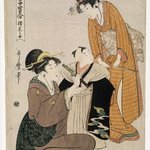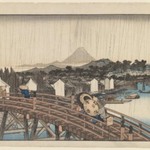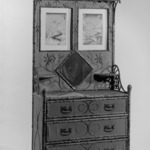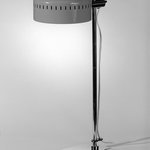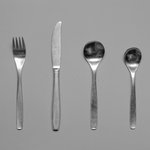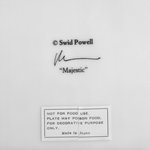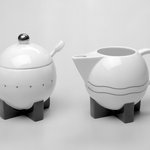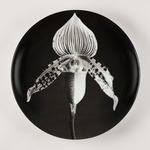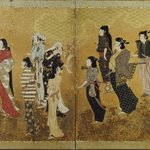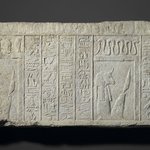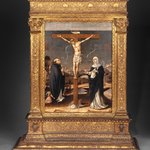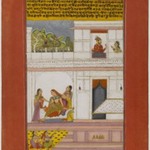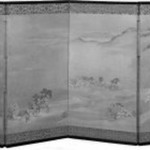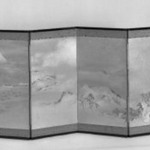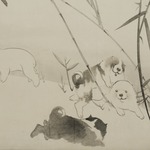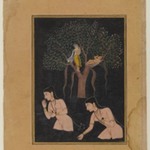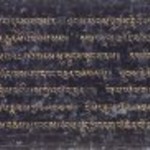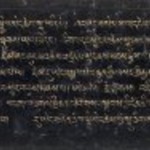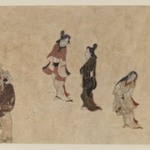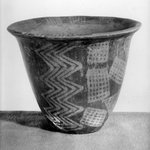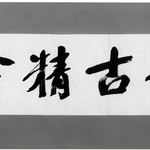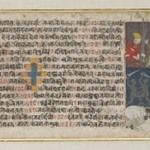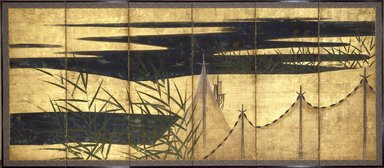

Yusho Kaiho (Japanese, 1533–1615). Drying Fishnets in the Four Seasons, ca. 1610. Ink, color and gold on paper, Overall: 66 1/6 x 148 1/2 in. (168.1 x 377.2 cm). Brooklyn Museum, Carll H. de Silver Fund and Ella C. Woodward Memorial Fund, 59.7.1. Creative Commons-BY (Photo: Brooklyn Museum, 59.7.1_SL3.jpg)
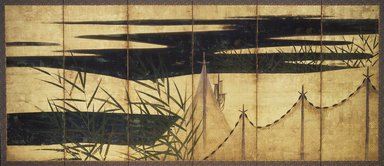
Yusho Kaiho (Japanese, 1533–1615). Drying Fishnets in the Four Seasons, ca. 1610. Ink, color and gold on paper, Overall: 66 1/6 x 148 1/2 in. (168.1 x 377.2 cm). Brooklyn Museum, Carll H. de Silver Fund and Ella C. Woodward Memorial Fund, 59.7.1. Creative Commons-BY (Photo: Brooklyn Museum, 59.7.1.jpg)

Yusho Kaiho (Japanese, 1533–1615). Drying Fishnets in the Four Seasons, ca. 1610. Ink, color and gold on paper, Overall: 66 1/6 x 148 1/2 in. (168.1 x 377.2 cm). Brooklyn Museum, Carll H. de Silver Fund and Ella C. Woodward Memorial Fund, 59.7.1. Creative Commons-BY (Photo: Brooklyn Museum, 59.7.1_detail_center_SL4.jpg)
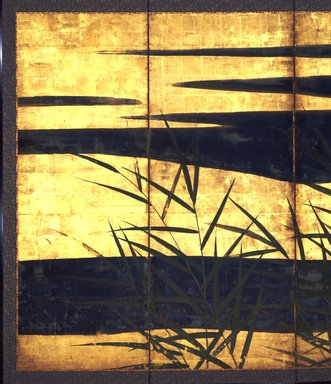
Yusho Kaiho (Japanese, 1533–1615). Drying Fishnets in the Four Seasons, ca. 1610. Ink, color and gold on paper, Overall: 66 1/6 x 148 1/2 in. (168.1 x 377.2 cm). Brooklyn Museum, Carll H. de Silver Fund and Ella C. Woodward Memorial Fund, 59.7.1. Creative Commons-BY (Photo: Brooklyn Museum, 59.7.1_detail_left_SL4.jpg)
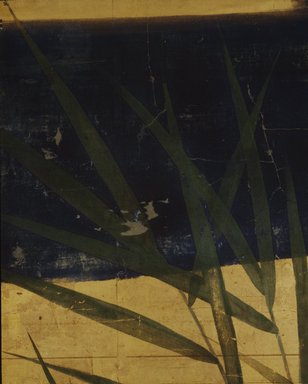
Yusho Kaiho (Japanese, 1533–1615). Drying Fishnets in the Four Seasons, ca. 1610. Ink, color and gold on paper, Overall: 66 1/6 x 148 1/2 in. (168.1 x 377.2 cm). Brooklyn Museum, Carll H. de Silver Fund and Ella C. Woodward Memorial Fund, 59.7.1. Creative Commons-BY (Photo: Brooklyn Museum, 59.7.1_detail_SL4.jpg)
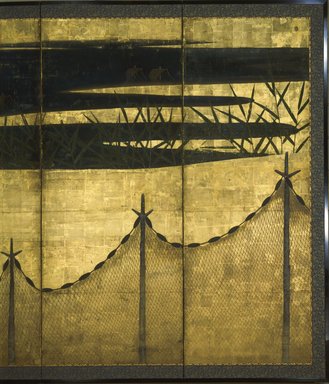
Yusho Kaiho (Japanese, 1533–1615). Drying Fishnets in the Four Seasons, ca. 1610. Ink, color and gold on paper, Overall: 66 1/6 x 148 1/2 in. (168.1 x 377.2 cm). Brooklyn Museum, Carll H. de Silver Fund and Ella C. Woodward Memorial Fund, 59.7.1. Creative Commons-BY (Photo: Brooklyn Museum, 59.7.1_detail_right_SL4.jpg)

Yusho Kaiho (Japanese, 1533–1615). Drying Fishnets in the Four Seasons, ca. 1610. Ink, color and gold on paper, Overall: 66 1/6 x 148 1/2 in. (168.1 x 377.2 cm). Brooklyn Museum, Carll H. de Silver Fund and Ella C. Woodward Memorial Fund, 59.7.1. Creative Commons-BY (Photo: Brooklyn Museum, 59.7.1_view1_acetate_bw.jpg)
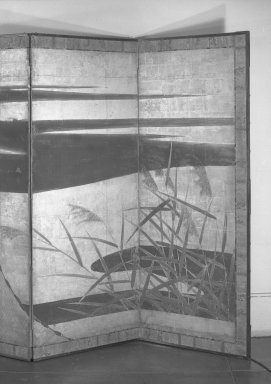
Yusho Kaiho (Japanese, 1533–1615). Drying Fishnets in the Four Seasons, ca. 1610. Ink, color and gold on paper, Overall: 66 1/6 x 148 1/2 in. (168.1 x 377.2 cm). Brooklyn Museum, Carll H. de Silver Fund and Ella C. Woodward Memorial Fund, 59.7.1. Creative Commons-BY (Photo: Brooklyn Museum, 59.7.1_detail10_acetate_bw.jpg)
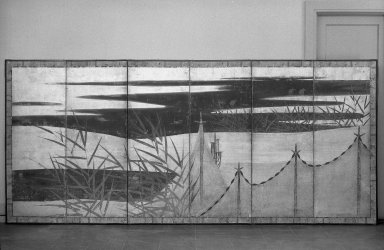
Yusho Kaiho (Japanese, 1533–1615). Drying Fishnets in the Four Seasons, ca. 1610. Ink, color and gold on paper, Overall: 66 1/6 x 148 1/2 in. (168.1 x 377.2 cm). Brooklyn Museum, Carll H. de Silver Fund and Ella C. Woodward Memorial Fund, 59.7.1. Creative Commons-BY (Photo: Brooklyn Museum, 59.7.1_view2_acetate_bw.jpg)

Yusho Kaiho (Japanese, 1533–1615). Drying Fishnets in the Four Seasons, ca. 1610. Ink, color and gold on paper, Overall: 66 1/6 x 148 1/2 in. (168.1 x 377.2 cm). Brooklyn Museum, Carll H. de Silver Fund and Ella C. Woodward Memorial Fund, 59.7.1. Creative Commons-BY (Photo: Brooklyn Museum, 59.7.1_view3_acetate_bw.jpg)

Yusho Kaiho (Japanese, 1533–1615). Drying Fishnets in the Four Seasons, ca. 1610. Ink, color and gold on paper, Overall: 66 1/6 x 148 1/2 in. (168.1 x 377.2 cm). Brooklyn Museum, Carll H. de Silver Fund and Ella C. Woodward Memorial Fund, 59.7.1. Creative Commons-BY (Photo: Brooklyn Museum, 59.7.1_view4_acetate_bw.jpg)
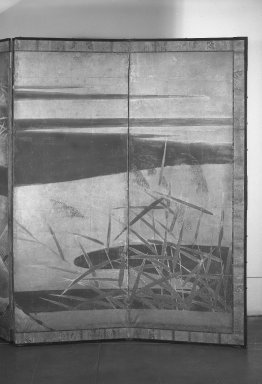
Yusho Kaiho (Japanese, 1533–1615). Drying Fishnets in the Four Seasons, ca. 1610. Ink, color and gold on paper, Overall: 66 1/6 x 148 1/2 in. (168.1 x 377.2 cm). Brooklyn Museum, Carll H. de Silver Fund and Ella C. Woodward Memorial Fund, 59.7.1. Creative Commons-BY (Photo: Brooklyn Museum, 59.7.1_detail01_acetate_bw.jpg)
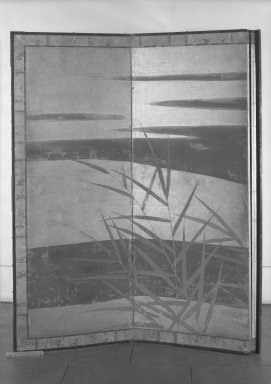
Yusho Kaiho (Japanese, 1533–1615). Drying Fishnets in the Four Seasons, ca. 1610. Ink, color and gold on paper, Overall: 66 1/6 x 148 1/2 in. (168.1 x 377.2 cm). Brooklyn Museum, Carll H. de Silver Fund and Ella C. Woodward Memorial Fund, 59.7.1. Creative Commons-BY (Photo: Brooklyn Museum, 59.7.1_detail03_acetate_bw.jpg)
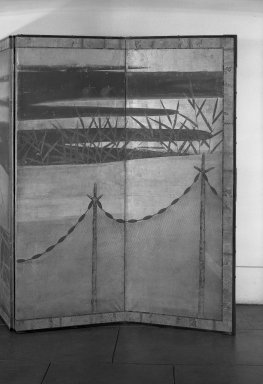
Yusho Kaiho (Japanese, 1533–1615). Drying Fishnets in the Four Seasons, ca. 1610. Ink, color and gold on paper, Overall: 66 1/6 x 148 1/2 in. (168.1 x 377.2 cm). Brooklyn Museum, Carll H. de Silver Fund and Ella C. Woodward Memorial Fund, 59.7.1. Creative Commons-BY (Photo: Brooklyn Museum, 59.7.1_detail05_acetate_bw.jpg)
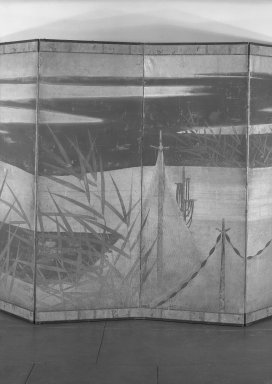
Yusho Kaiho (Japanese, 1533–1615). Drying Fishnets in the Four Seasons, ca. 1610. Ink, color and gold on paper, Overall: 66 1/6 x 148 1/2 in. (168.1 x 377.2 cm). Brooklyn Museum, Carll H. de Silver Fund and Ella C. Woodward Memorial Fund, 59.7.1. Creative Commons-BY (Photo: Brooklyn Museum, 59.7.1_detail04_acetate_bw.jpg)

Yusho Kaiho (Japanese, 1533–1615). Drying Fishnets in the Four Seasons, ca. 1610. Ink, color and gold on paper, Overall: 66 1/6 x 148 1/2 in. (168.1 x 377.2 cm). Brooklyn Museum, Carll H. de Silver Fund and Ella C. Woodward Memorial Fund, 59.7.1. Creative Commons-BY (Photo: Brooklyn Museum, 59.7.1_detail06_acetate_bw.jpg)

Yusho Kaiho (Japanese, 1533–1615). Drying Fishnets in the Four Seasons, ca. 1610. Ink, color and gold on paper, Overall: 66 1/6 x 148 1/2 in. (168.1 x 377.2 cm). Brooklyn Museum, Carll H. de Silver Fund and Ella C. Woodward Memorial Fund, 59.7.1. Creative Commons-BY (Photo: Brooklyn Museum, 59.7.1_detail02_acetate_bw.jpg)

Yusho Kaiho (Japanese, 1533–1615). Drying Fishnets in the Four Seasons, ca. 1610. Ink, color and gold on paper, Overall: 66 1/6 x 148 1/2 in. (168.1 x 377.2 cm). Brooklyn Museum, Carll H. de Silver Fund and Ella C. Woodward Memorial Fund, 59.7.1. Creative Commons-BY (Photo: Brooklyn Museum, 59.7.1_detail08_acetate_bw.jpg)
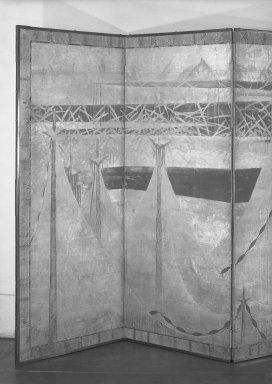
Yusho Kaiho (Japanese, 1533–1615). Drying Fishnets in the Four Seasons, ca. 1610. Ink, color and gold on paper, Overall: 66 1/6 x 148 1/2 in. (168.1 x 377.2 cm). Brooklyn Museum, Carll H. de Silver Fund and Ella C. Woodward Memorial Fund, 59.7.1. Creative Commons-BY (Photo: Brooklyn Museum, 59.7.1_detail09_acetate_bw.jpg)
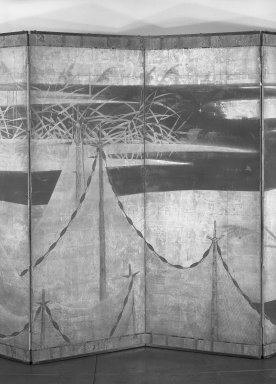
Yusho Kaiho (Japanese, 1533–1615). Drying Fishnets in the Four Seasons, ca. 1610. Ink, color and gold on paper, Overall: 66 1/6 x 148 1/2 in. (168.1 x 377.2 cm). Brooklyn Museum, Carll H. de Silver Fund and Ella C. Woodward Memorial Fund, 59.7.1. Creative Commons-BY (Photo: Brooklyn Museum, 59.7.1_detail07_acetate_bw.jpg)
Drying Fishnets in the Four Seasons
Yusho Kaiho
Asian Art
The subject of fishnets hanging on beachside posts was popular in part because it referred to a Chinese theme, “Fishing Village in Evening Glow,” that had been treated by East Asian artists and poets for centuries as part of the larger suite of subjects called “Eight Views of the Xiao and Xiang Rivers.” Here the fishnets frame a subtle story of seasonal change: moving from right to left, we see the new beach grasses of spring, which grow tall in the summer, go to seed and start to yellow in the fall, and then completely desiccate in the winter. These screens, and a very similar pair in the Imperial Household Collection in Tōkyō, have long been attributed to the Momoyama-period artist Kaihō Yūshō, but they bear neither a signature nor seals to confirm this attribution.

